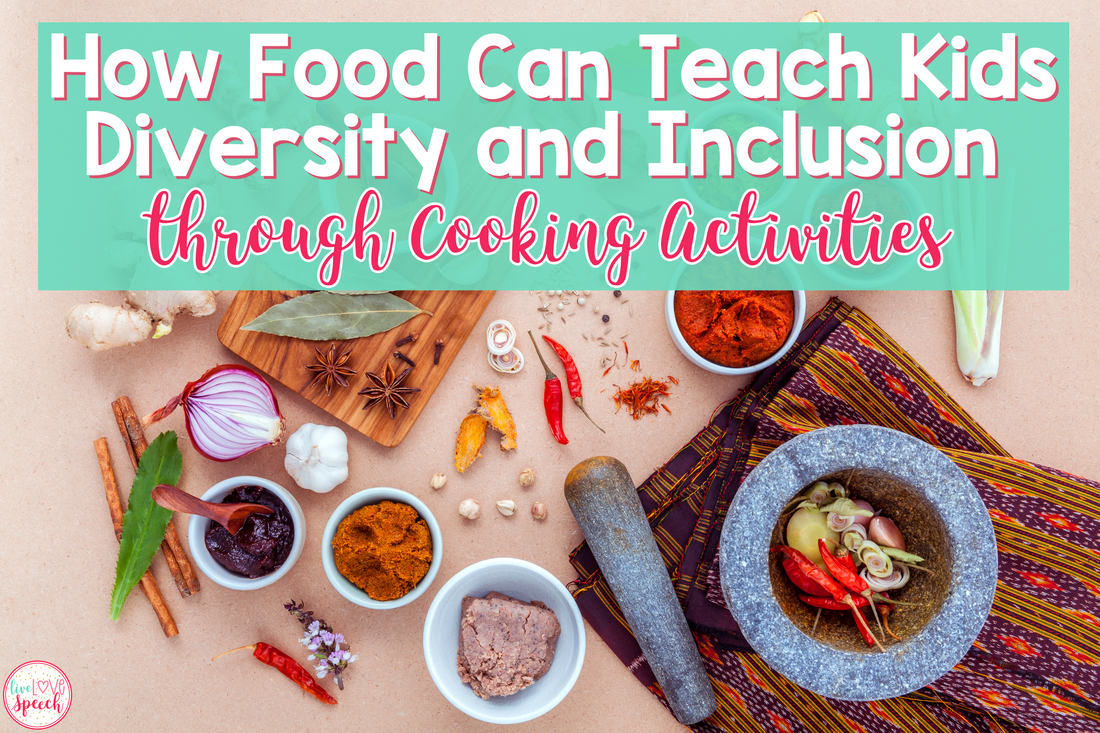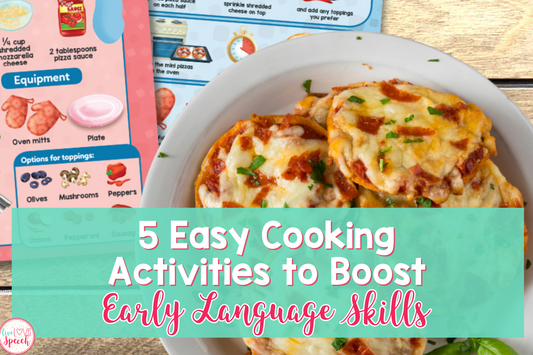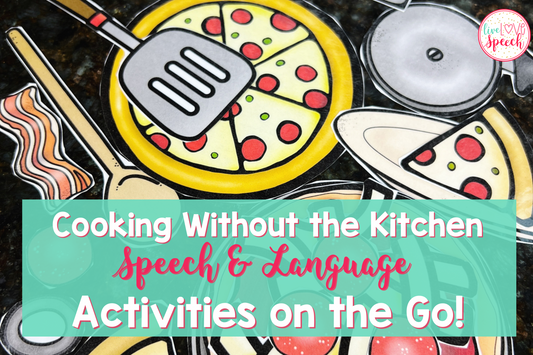 Food has always been one of my favorite ways to connect with kids. It’s simple, it’s sensory, and it creates this natural space where everyone can show up as themselves. Cooking together feels fun, but it can also be a powerful tool for teaching diversity and inclusion, even with young kids.
Food has always been one of my favorite ways to connect with kids. It’s simple, it’s sensory, and it creates this natural space where everyone can show up as themselves. Cooking together feels fun, but it can also be a powerful tool for teaching diversity and inclusion, even with young kids.
When I started doing more food-based activities with my little boy, Landon, I saw how naturally it led to questions and conversations. “Where does this come from?” “Why do we eat this?” “What’s that called?” Those moments opened the door to something bigger: helping him understand and respect people whose lives, foods, and traditions look different from his own.
Here’s how you can bring that same magic into your therapy sessions, classrooms, or even your home.
Cooking Activities That Introduce Cultural Foods
One of the easiest ways to start these conversations is through simple recipes from different cultures. You don’t need a long grocery list or anything fancy. We’ve made guacamole from Mexico, rolled up kid-friendly sushi from Japan, and even tried Italian pasta with homemade sauce.
One of our favorites is the pizza bagel recipe from my Visual Recipe Cards for Kids. It’s familiar, but still a great way to talk about Italian-American cuisine and how different cultures put their own spin on similar foods. Some families use pita bread, naan, or even tortillas as a base—and those differences are worth exploring.
While we make it, I’ll ask Landon things like, “How do you think other families might make this?” or “What would you add to make it your own?” These questions help kids think outside their own experience and see food as something personal and cultural.
Why it matters: Recipes like this open the door for inclusion and diversity conversations because they’re flexible and familiar. You can invite kids to share how their family makes something similar or choose toppings that reflect their own background or preferences. Everyone gets a chance to make it “their way”—and that’s what inclusion looks like in action.
Inclusion & Diversity Through Vocabulary in Cooking Activities
Cooking is full of rich, meaningful vocabulary. Whether it’s a new ingredient or a tool, there’s so much to learn in a hands-on way. Words like naan, miso, or tamale become part of the experience, not just words on a list.
I’ve noticed that when kids actually touch or taste something while hearing the word, they remember it longer. My Visual Recipe Cards include vocabulary cards alongside each recipe. The cards show real images and feature diverse, inclusive characters so you’re reinforcing language while celebrating culture.

Why it matters: Introducing new words in context helps with comprehension and confidence. When kids use those words in conversation, they start to connect language with meaning and identity.
Tip: Create a “new word wall” with photos of the ingredients or tools you’ve used that week. Let the kids draw, label, or match them as part of your snack routine.
Storytelling
I love telling stories while we cook. Sometimes I’ll share a little background about how a recipe is traditionally prepared, like how families gather to make tamales at Christmas or how dumplings are folded for Lunar New Year.
Other times, I ask Landon to make up his own story about where the food might come from or who might love to eat it. These little storytelling moments help kids create a connection beyond the recipe itself.
Why it matters: Stories bring food to life. They give kids a personal reason to care about the traditions behind the dish. And they create space for everyone to share their own experiences, too.
Encouraging Conversations

Snack time is the perfect time to talk. The mood is lighter, the hands are busy, and the pressure is low. I’ll ask Landon things like:
-
“Have you ever eaten something like this before?”
-
“What do you think this tastes like?”
-
“If you could cook this for someone special, who would it be?”
These questions spark curiosity and give kids a safe space to share ideas and experiences. When I use this in small groups, it becomes a natural time for turn-taking, asking questions, and listening, no forced role-play, just real conversation.
Tip: My Fall Snacks and Stories sets make this even easier. Each one comes with guided question prompts designed to support all communication styles. Some of the questions you can ask your kids are:
-
“Would you like to make this at home?”
-
“What ingredients would you change?”
-
“Does this remind you of anything your family makes?”
Whether you're working on answering questions, expanding language, or building social interaction, these visuals keep kids engaged and supported throughout the activity.
Why it matters: Structured, open-ended questions give every child a voice. When you model and support inclusive conversations, you help kids feel seen, heard, and respected,right at the snack table.
Inclusion Through Food
One of my favorite parts of this work is when kids bring their own food stories to the table. Whether it’s a recipe from home, a favorite snack, or even just how their family eats dinner it all matters.
In therapy or class, I’ll ask kids to share a food that’s special to their family. They can draw it, describe it, or even bring in a photo. You wouldn’t believe how proud they are to see their food and culture celebrated in a shared space.
Why it matters: When kids feel seen and heard, they’re more confident and more open to learning about others. Inclusion starts with giving everyone a seat at the table.
Tip: Create a “Family Food Week” where each child gets a turn to share something from home. It doesn’t need to be a full recipe just a story, snack, or simple tradition.
Let’s Build Connection Through Food
You don’t need a big kitchen or fancy ingredients to start. Just a few basics, a plan, and a recipe card or two can turn snack time into something meaningful.
Want ready-to-go materials?
Check out my Visual Recipe Cards for Kids and Snacks & Stories Sets. They’re low-prep, easy to use, and designed to make every child feel included while they learn and grow.
Keep the Conversation Going with Books Too
If you’re looking to extend your cooking activities and inclusion lessons beyond the kitchen or therapy table, pairing them with diverse picture books is a great next step. I love using food-themed read-alouds to spark even more conversation, make cultural connections, and build vocabulary in a fun, low-pressure way.
I put together a list of some of my favorite Diverse & Inclusive Food-Themed Books for Kids that you can easily add to your classroom library or therapy shelf. Each one is packed with opportunities for language, connection, and cultural exploration.
SAVE THIS POST
Don't forget to save this post on your favorite Pinterest board so you'll be all set when it comes time to planning your next cooking activity.







